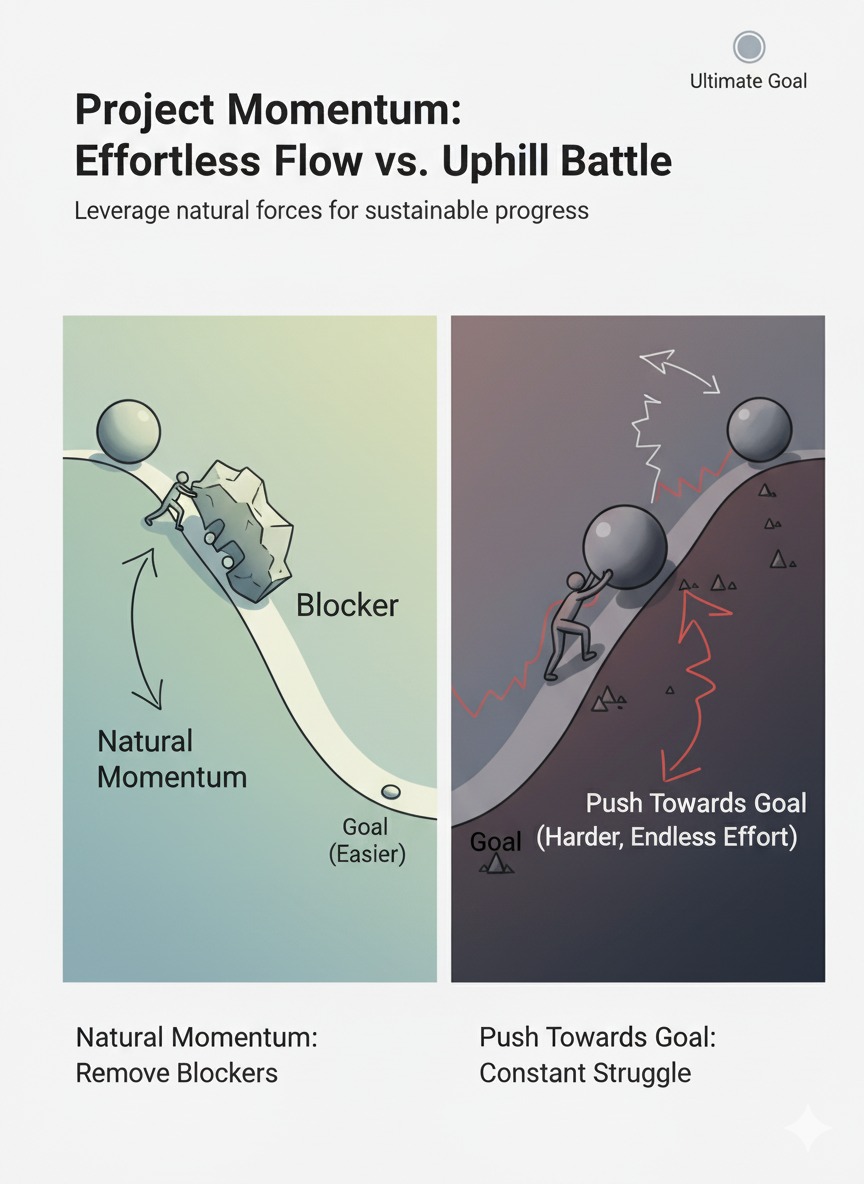 (image credit: https://emmavtanner.com/2022/01/08/surface-pressure/)
(image credit: https://emmavtanner.com/2022/01/08/surface-pressure/)
Here’s something I’ve been thinking about: you can control the inputs, but not the outputs. This perspective comes into play when you consider the anxiety that comes with taking on something new. The pressure can be overwhelming.
The Reality of Effort vs. Results
You cannot do magic. Let me give you an example. Think about losing weight. You can wish all you want “I wish this would happen, I wish I could do it, maintain it” but nothing happens without the actual actions you can take. Maybe you need to cut something out of your diet, or start exercising, or work with a personal trainer. These are the specific activities you can control.
The trap many of us fall into? Getting obsessed with the outcome instead of the process.
What I Learned Managing Complex Projects
In my old life, I used to think: “Okay, I’m going to put all my energy into this and make it work.” But you very quickly learn it’s exhausting doing it that way. You end up burnt out before the outcome even happens as everyday before the goal is achieved is a day you failed!
Breaking Down the Path Forward
Instead, I like to think about how any goal can be broken down into stages. For each of those stages, you need to ask yourself:
What can I actually control?
Whether you’re managing a team, working with customers, or tackling a personal goal, your job is to break down what you’re trying to accomplish. Let’s say you have a big project maybe it’s a particular piece of legislation, or a business initiative, or even a product launch. What you need to do is:
- Create a clear description of the goal and share it with everyone involved
- Set expectations upfront about what success looks like
- Define your success metrics before you begin
- Identify the specific follow-up actions you can take at each stage
The Learning Phase
Sometimes you’re starting from scratch, and there’s a lot to learn just to understand the context of the problem. In that case, you need to do the groundwork: alignment sessions, research, defining acceptance criteria. Once you’ve done all of that, you can say: “Okay, now we have something concrete to work with.”
The Headlights
Think of it like driving at night. You can’t see the entire journey ahead you only have your headlights, which might illuminate just 15 yards in front of you. But you can still make that journey. When you reach the end of those 15 yards, your headlights illuminate the next section. The only way you’re able to do this is by trusting that things are going to work out as you move forward.
That’s why you need to think about the infrastructure of progress: How are you going to get it done? What does “done” actually look like?
Building Your Daily Practice
What really works is having daily check-ins where you:
- Review what’s getting done
- Keep yourself accountable
- Compare progress against your plan
You need to define what “done” means at every stage. What does it mean to complete research? What does it mean to get stakeholder buy-in? Each phase of your infrastructure needs clear definitions so you know you’re on track.
Managing the Inevitable Challenges
During any project, you’re going to hit obstacles that’s just reality. The tools and processes you use need to account for this.
For example, when you hit a roadblock in research, make your findings visible create a diagram or write up that makes the problem at least 10 times clearer.
When requirements aren’t coming together, build a quick mockup or prototype to make the abstract concrete. The act of making things visible often reveals the path forward.
The Implementation Phase
Once you move into implementation, break it down further. Let’s say you expect it will take 30 weeks to complete.
Divide that into three phases. Acknowledge that bugs will pop up—that’s the nature of development. What can you do about it?
- Phase 1 (weeks 1-10): Foundation - Build the core functionality and infrastructure
- Phase 2 (weeks 11-20): Refinement - Fix bugs, optimize, and polish the implementation
- Phase 3 (weeks 21-30): Integration - Incorporate feedback from team members and stakeholders
Building Sustainable Momentum
But there’s something more fundamental at play here it’s not just about what you’re doing or what you’re learning. What really matters is having autonomous motivation. That’s how you create something truly sustainable.
Finding Common Ground
When I work with engineers, they actually want to do great work. Everyone I’m working with wants what’s best for the business. That common ground is where we start.
The key is helping people understand what “best for the business” actually means. Once they can see how the problem affects everyone, they get it—they see what’s stopping progress, what’s happening right now, and how they can help remove those obstacles.
From Pushing to Pulling

This kind of thinking creates something more sustainable. When you’re able to help people see clearly, when you can connect the dots for them and show them how they can make an impact that’s when miracles start to happen.
And here’s the beautiful part: it happens without the anxiety.
Think about it this way: Instead of pushing, you’re creating pull. How many things can you push before you burn out? Think of all the people in your life if you’re pushing all of them, you’re going to exhaust yourself. But when people start pulling themselves forward because they genuinely want the outcome? That’s when things really start happening.